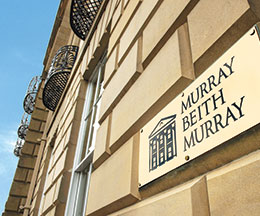Murray Beith Murray LLP is a leading Scottish private client law firm.
For 175 years we have specialised in meeting the legal, financial and administrative needs of individuals and families, family trusts, charities and private companies.
Murray Beith Murray LLP is a leading Scottish private client law firm.
For 175 years we have specialised in meeting the legal, financial and administrative needs of individuals and families, family trusts, charities and private companies.

Murray Beith Murray writes about ‘Boundaries and valuable land rights in the countryside’ in the autumn edition of Scottish Land & Estates, LandBusiness magazine. Read the full article below:
The transfer of titles from the Register of Sasines to the Land Register will inevitably result in some unintended errors and omissions, such as a boundary being shown incorrectly on the Land Register’s map or valuable rights being omitted.
The exercise of creating a title sheet and plan for a property, under the Scottish Government’s drive to land register all titles by 2024 (publicly owned land by next year) may also highlight latent errors in the Register of Sasines as the rights relating to the property are processed in the new map-based format.
These errors can cause delay and expense if a landowner discovers, for example, that an area of land that has been identified for sale has been mistakenly registered to a neighbour.
Sasine title deeds for land may have a general description (e.g. ‘the Lands and Estate of...’) rather than a plan, or the plans for adjoining properties may include the same area of land. The difference is that under the Land Registration etc. (Scotland) Act 2012, which governs the Land Register there is a general rule that there will be no overlapping boundaries.
The Land Registration Acts place duties on the Keeper of the Registers to rectify titles and also give rights of compensation depending on the registration status of adjoining property and the date when the properties entered the Land Register. Appeal against any decision of the Keeper, on fact or law, is to the First-tier Tribunal and thereafter to the Upper Tribunal and then to the Inner House of the Court of Session. Judicial review is also available.
Where boundaries are concerned, it is generally important that a claimant has (1) a title that is capable of including the land and (2) possession. There is case law from the 19th century in which local opinion as to ownership was accepted, but actual possession is the most important consideration under the Acts.
In Scots law, possession requires both animus (mind) and corpus (body). There must be both an intention to possess the thing and some act of a physical nature giving effect to that intention. The facts and circumstances of each case will determine whether or not a claimant qualifies as possessor of land and the operation of time may also be relevant.
Boundary features such as stones or fences can be indicators of possession, as are leases and IACS maps, but it is not uncommon for fences on high ground to follow a practical line rather than the title line.
Evidence of possession could take the form of an affidavit speaking to activities on the land by the claimant or a predecessor in title. It is not, however, unknown for adjoining estates to exercise sporting and other rights over the same area of land, with both believing they own it. The use of the land could be very important where there are competing titles.
A reserved right of the Government is Keeper Induced Registration, the process by which the Keeper effects registration without input from the owner or the owner’s solicitor based on already registered titles to adjacent or nearby properties. The risk is that the Keeper will select a line on the Ordnance Survey Map without knowledge of possession or the owner’s understanding of the boundary line and the necessary rights that go with the property.
If boundaries are to be correctly plotted and rights are to be correctly preserved, a team effort is required between a landowner and his agents.
At Murray Beith Murray, our rural property lawyers have considerable experience in registration issues. If you would like to speak to someone about this, or any other rural property matter, phone us now on 0131 225 1200 or complete the enquiry form.
